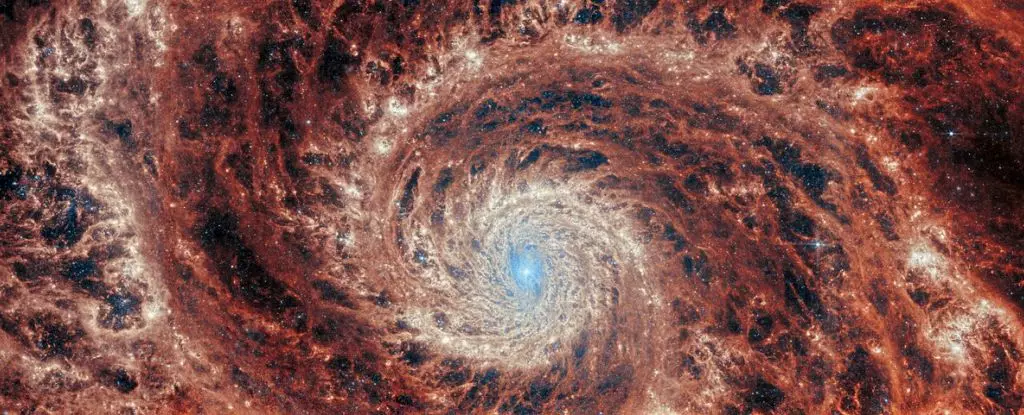In the grand tapestry of cosmic history, the emergence of the first galaxies marks a pivotal moment. Following the Big Bang, which occurred approximately 13.8 billion years ago, the nascent universe was primarily a chaotic mix of particles and radiation. Over time, gravity began pulling matter together, allowing the formation of stars and galaxies from the primordial soup. Traditionally, researchers have adhered to models suggesting a gradual assembly of galaxies, with significant structures devoting eons to mature. However, new findings from the James Webb Space Telescope (JWST) challenge this long-held assumption, revealing that some galaxies reached advanced stages of development much sooner than anticipated.
Among the most significant revelations emanating from recent JWST observations is the discovery of an extraordinary galaxy named Zhúlóng, a term derived from the Torch Dragon in Chinese mythology. This remarkable galaxy appears to have formed just 12.8 billion years ago, a mere billion years after the Big Bang, suggesting a much accelerated timeline for galaxy formation. Led by astronomer Mengyuan Xiao from the University of Geneva, this research team articulates the importance of this discovery in reshaping our understanding of galaxy evolution and the questionable timelines previously associated with it.
Zhúlóng has been classified as a grand design spiral galaxy, which represents the pinnacle of galactic structure and aesthetics. Characterized by well-defined spiral arms and a bright central core, these galaxies offer a beautiful symmetry that defies the formlessness observed in other galaxy classifications, such as lenticular or irregular. Current astrophysical models suggest that such intricately structured galaxies began forming much later in cosmic history, typically not seen before 11.5 billion years ago. Therefore, the early emergence of Zhúlóng not only alters our perspective on galactic assembly but also opens avenues for new theories on the mechanisms that drive such rapid development.
Described in a preprint paper on arXiv, researchers highlight that Zhúlóng possesses a striking morphology indicative of what we might consider a ‘mature’ galaxy. It features an acoustic equilibrium of a classical bulge accompanied by a vibrant, star-forming disk and grand-design spiral arms that extend outward. The data indicate a significantly advanced state of formation by just 1 billion years post-Big Bang, providing evidence for a galaxy that has likely settled into a well-defined structural phase much sooner than its contemporaries.
The implications of discovering Zhúlóng extend beyond the mere existence of a beautiful galaxy in its early form. The presence of this massive, evolved structure implies that the processes capable of forming such galaxies are far more efficient than previously estimated. Calculate the formation timeline of galaxies like Zhúlóng; it suggests that a Milky Way-like galaxy could form approximately ten times faster than comparable structures do in our current epoch.
Furthermore, the morphology of Zhúlóng indicates a quiescent black hole at its center, which appears to be inactive. This observation provokes speculation about the nature of star formation in such early galaxies, with rates reported to be between 20 and 155 solar masses per year. The relative activity in star formation hints at an interesting dynamic as galaxies evolve—they might go through a brief but intense phase of star formation before settling into a more stable state.
As astronomers continue to analyze the data collected from JWST and other telescopes, the understanding of galaxy formation is poised to undergo a significant transformation. The discovery of Zhúlóng offers a fascinating glimpse into the possibilities that early cosmic structures may present, challenging existing paradigms of how we perceive the evolutionary timelines of galaxies.
Zhúlóng represents more than just a spectacular cosmic body; it embodies a transformative leap in our understanding of galactic formation and maturation processes. As we delve deeper into the cosmos with advanced observational technology, each new discovery promises to unearth further layers of intrigue surrounding the formation and evolution of the universe, driving us toward a more nuanced grasp of our cosmic origins.


Leave a Reply